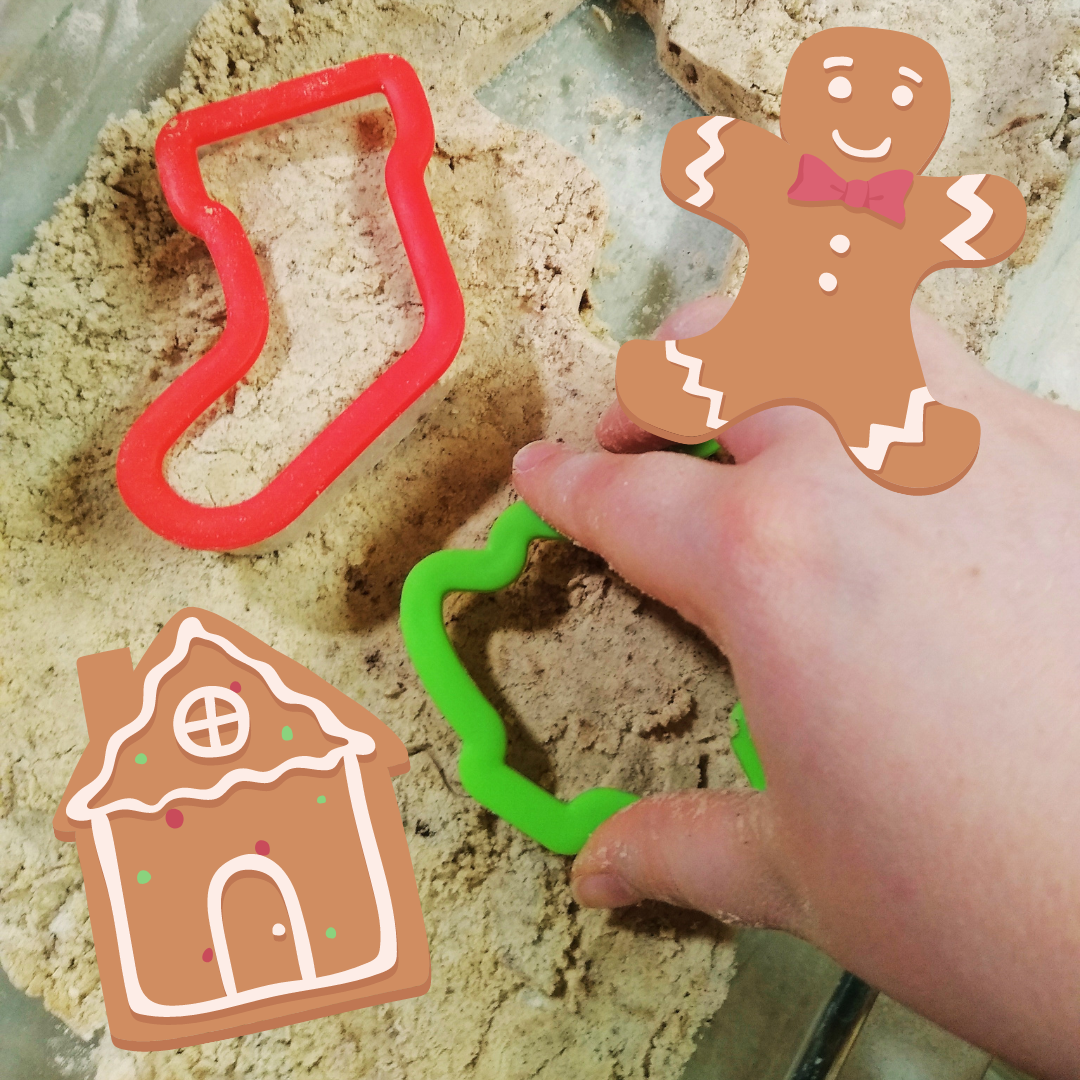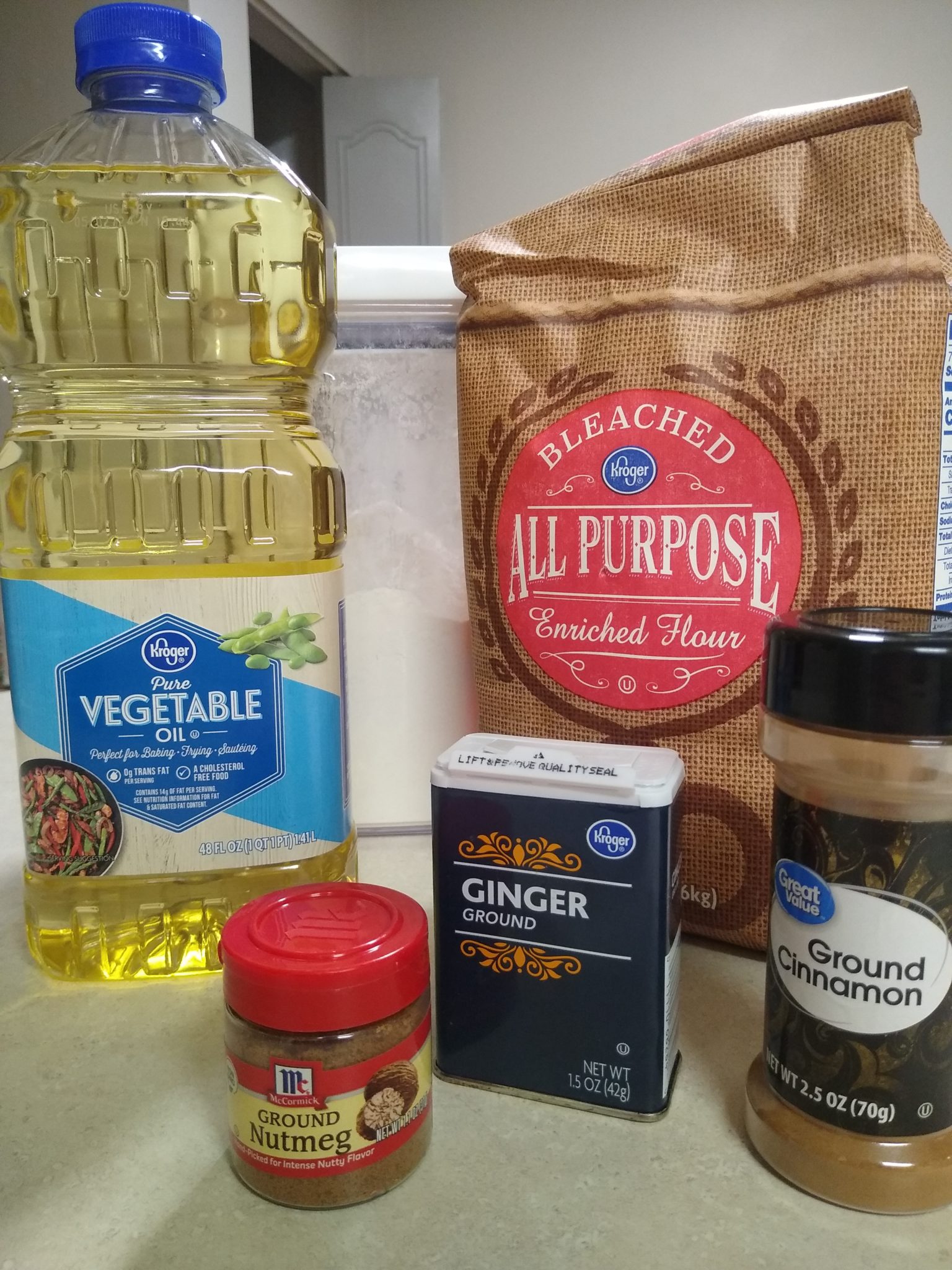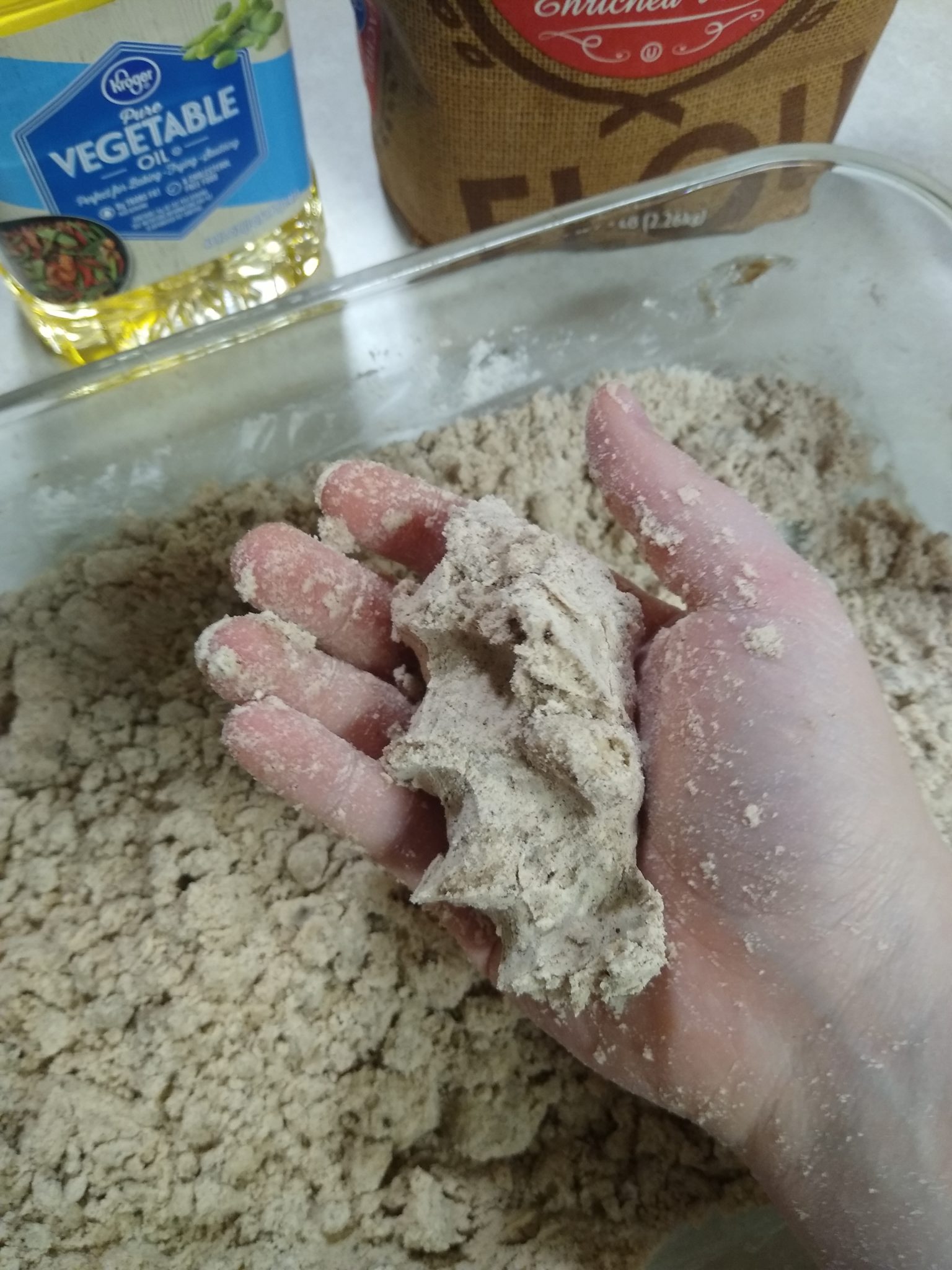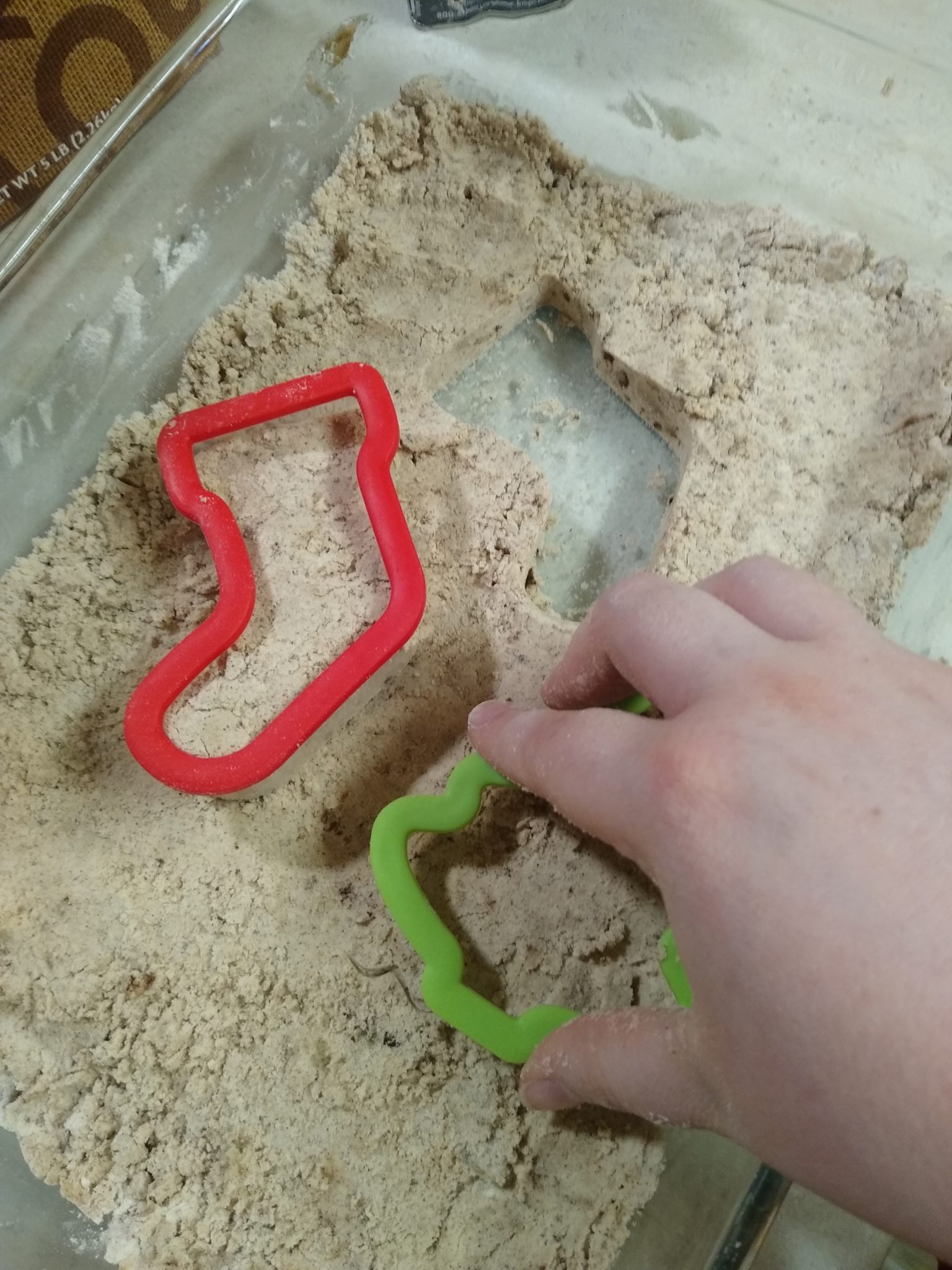
‘Tis the season for holiday baking — cakes, pies, breads and best of all, cookies! My mom has quite the extensive cookie cutter collection. One of my favorite holiday traditions growing up was sorting through all the fun shapes then baking and decorating until we had enough cookies to last us through February! 🍪
If your little one’s not quite ready to take part in the flurry of holiday baking, or you’re just on the lookout for a fun winter break activity, may I introduce the magic of the gingerbread dough sensory bin! The recipe is adapted from the blog Sugar, Spice and Glitter. Although flour and oil don’t make for a particularly tasty snack, this dough is safe for little ones to munch on. Plus, all that gingerbread-y goodness smells HEAVENLY! Here’s what you’ll need to make your own gingerbread dough:
Ingredients:
- 8 cups flour
- 1/2 cup cinnamon
- 2 Tablespoons ginger
- 1 Tablespoon nutmeg
- 1 Tablespoon allspice
- 2 cups oil (vegetable oil keeps it edible, but baby oil works too)

Thanksgiving pie baking depleted my allspice supply, but the dough worked perfectly without it. Use what you’ve got!
Directions:
- To eliminate any E. coli concerns, start by preheating the oven to 350° F. Spread flour evenly across a baking sheet and bake for a quick 5 minutes. Allow to cool.
- Add flour then oil to a large plastic tub or other play container of your choice (I used my biggest casserole dish!). Follow with cinnamon, ginger, nutmeg and allspice.

It sure looks like a lot of spices, but it has that perfect spicy gingerbread smell. - Combine with a spatula or get little hands involved in hand-mixing the dough. Aim for a dry-ish, well-mixed dough which compresses well. Add more flour if it’s too wet or a little more oil if it’s too dry to clump together.

The ideal texture — crumbly, but easily compressed. - Gather your toys and tools and dig into that dough!

I don’t have any little ones at home to partake in this sensory bin, but I had a surprisingly fun time digging into it myself!
Variations:
- Gluten-Safe: substitute white flour for gluten-free flour or buckwheat.
- Sugar Cookie Dough: for kiddos who are extra-sensitive to the “spicy” scents of cinnamon, ginger, nutmeg and allspice, add a little vanilla extract instead (and maybe some colorful sprinkles!) to make sugar cookie dough.
- Baker’s Space: gather baking implements like measuring cups, cookie cutters, a wooden spoon or a baking sheet to keep little ones busy in the kitchen.
- Construction Zone: turn your gingerbread dough bin into a mini sandbox and get to work with shovels and construction toys.
- All-Natural: bring the outside in by providing cranberries, cinnamon sticks, pine branches, stones, etc.
Other Tips:
- The fun of sensory bins comes with the potential for mess, of course. Set expectations and boundaries with your child ahead of time to help minimize the mess, like keeping the gingerbread dough within the confines of the bin or on top of the kitchen table. Enlist their help with clean-up, too! If things get out of control, it’s always okay to put the bin away and try again another day.
- Oil will eventually turn rancid, so give your dough a sniff each time you pull it out. If kept clean and dry in a closed bin, this dough should keep at least through the holiday season!



